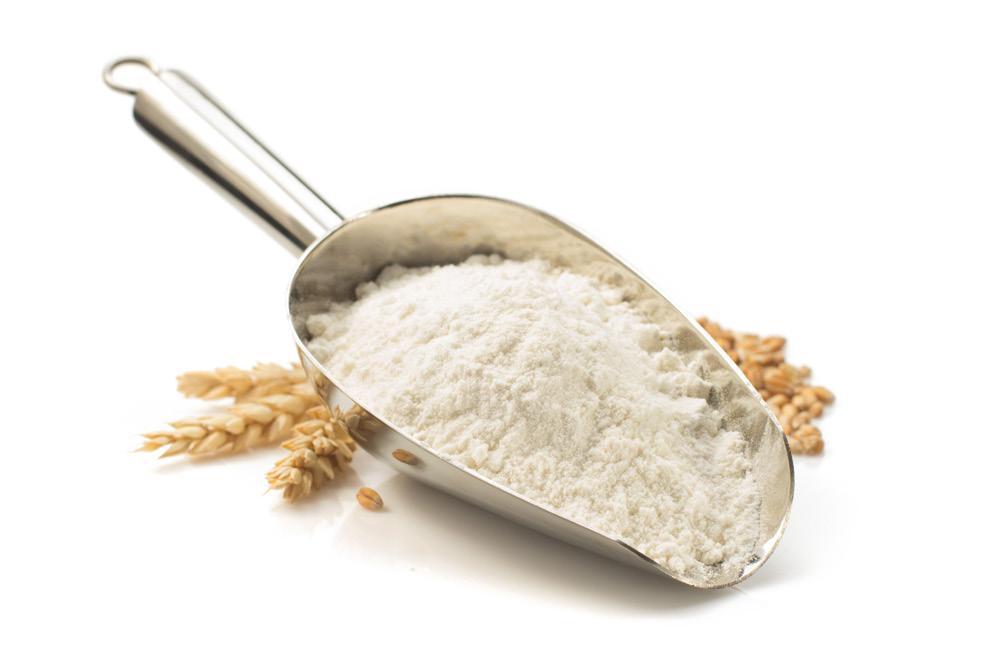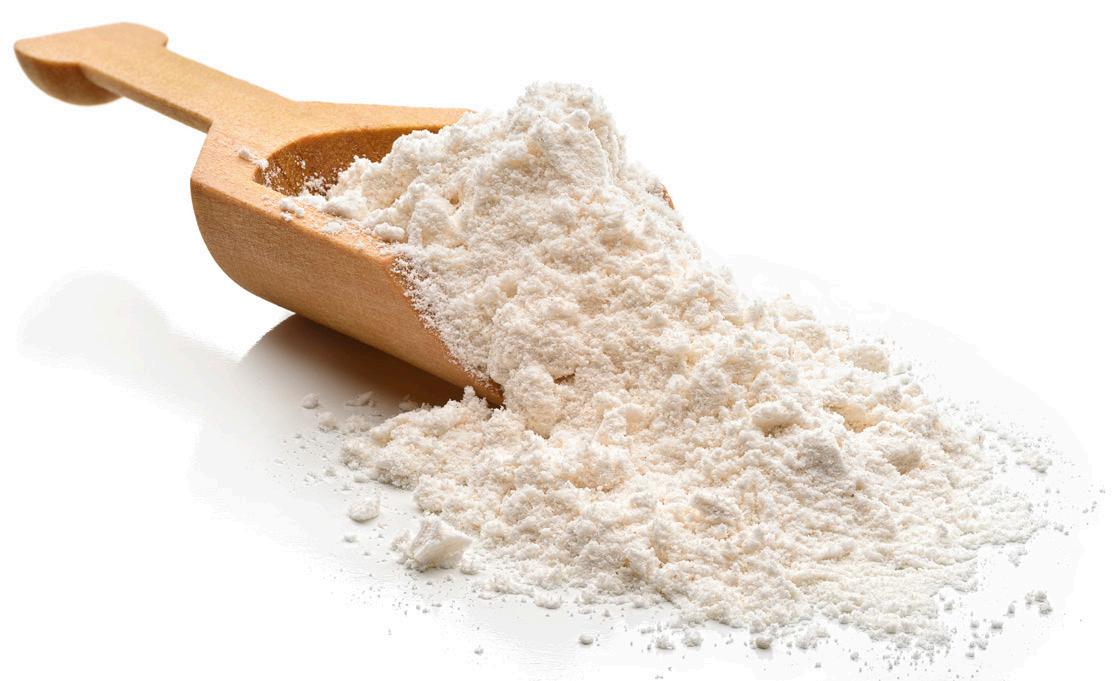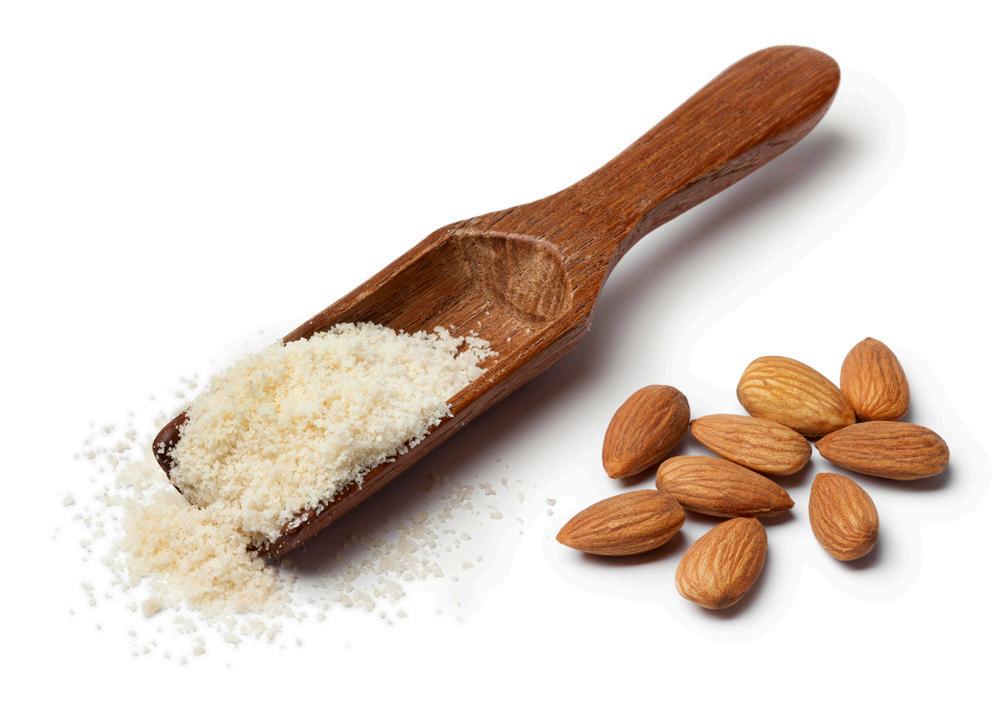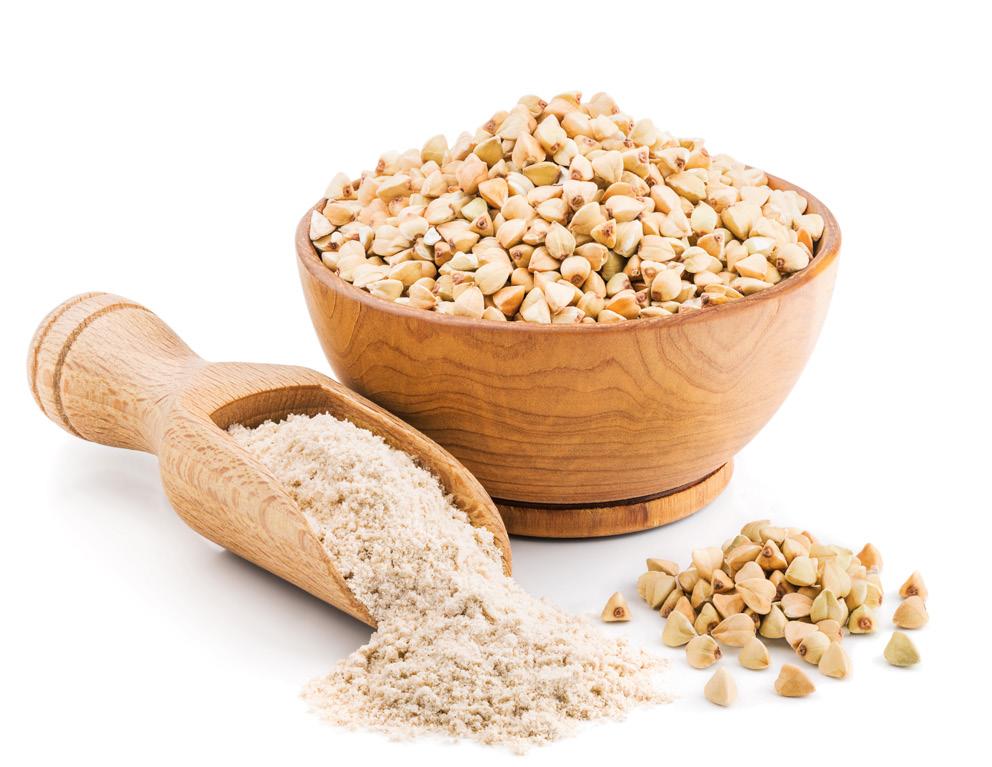
3 minute read
Flour power
From baking to frying and thickening, flour is one of the most versatile ingredients in the kitchen pantry. But did you know that there are many types of flours you can use in your cooking?
Wheat flour
Advertisement
Several types of flours come under this umbrella including the ubiquitous all-purpose flour, self-raising flour, and bread flour. The one thing they all have in common, being made from wheat, is they contain gluten. Whole wheat flour, which contains endosperm, germ and fibre-rich bran, is denser than all-purpose flour. Wheat flours are incredibly versatile and well suited to many types of bread, cakes, biscuits, pastry and pasta.

SPELT FLOUR
Made from an ancient wholegrain form of wheat, spelt flour is a great alternative to allpurpose flour that has more vitamins, fibre, protein and minerals than modern wheat. But being a wheat sub-species, also known as farro or dinkel, it’s important to note spelt is low in gluten but not gluten-free. With a mellow, nutty flavour, spelt is often used in sourdough bread, muffins, scones, and even chocolate chip cookies.

RICE FLOUR
Delicate and mild in flavour, this glutenfree flour is commonly used in Asian dishes including rice cakes, noodles, pancakes and pastries. The white variety is great for a tempura batter when frying vegetables, while the nutty flavour of the brown variety works well in cookies, shortbread, and pie crust. Not to be confused with rice starch, rice flour can also be used to thicken soups and stews.

Almond flour
Made from almonds that are ground to a meal, this low-carb flour is often used in gluten-free and paleo baking. Almond flour is more nutrient dense than wheat flour but it’s important to know it is also rich in calories and high in omega-6, which can cause inflammation if consumed in large amounts. Almond flour is an excellent option for no-bake pastry crusts, pancakes, brownies, and macarons.

BUCKWHEAT FLOUR
Despite its name, this nutritious ancient grain flour does not contain wheat. Traditionally used in French crepes and galettes, as well as Japanese soba noodles, buckwheat flour is naturally gluten free, low GI, and high in magnesium. Due to its high mineral and antioxidant content, buckwheat flour has become a popular health food. With a naturally earthy flavour, try using buckwheat flour in pancakes, savoury pikelets, and soufflés.

CORN FLOUR
Milled from whole corn kernels, corn flour is ideal for adding texture to baked goods and should not be confused with cornstarch, which is often used as a thickening agent. Corn flour contains protein and fibre, and is commonly used in corn bread, a traditional side dish in American barbecue. Naturally sweet in flavour, corn flour makes a light and airy sponge cake, buttery melting moments, and crispy roti flatbread.








